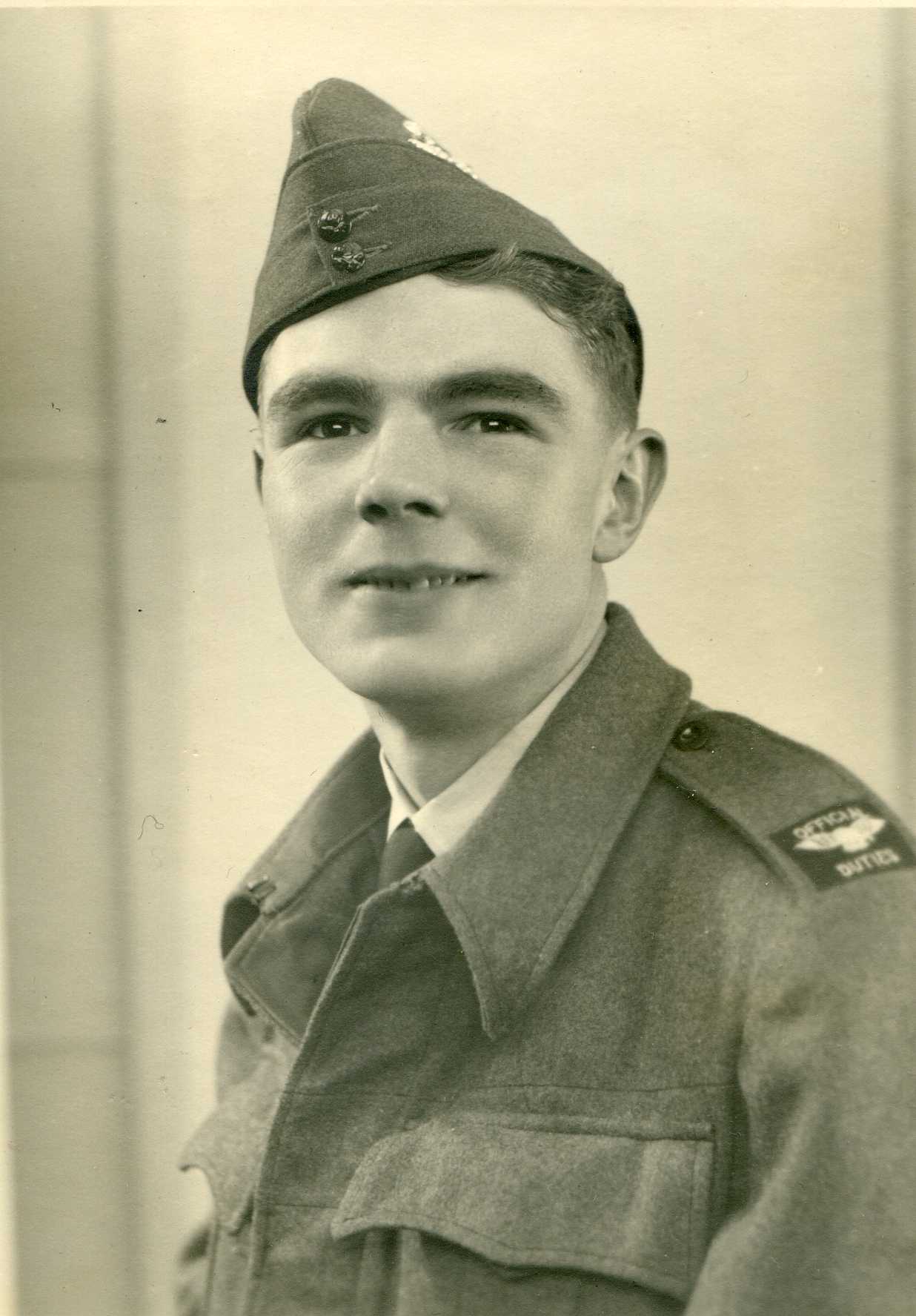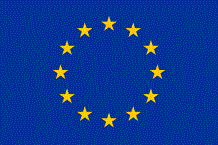Harold Dick Sewell Faulder (1918-2005) was my father. I am currently trying to write up his life and am posting an outline that may provoke others to contribute.
Summary
- He was born 5 July 1918, ten weeks after his father, Harold Faulder was killed in action near Ypres.
- He used to say he was born in the Odeon Cinema, Swiss Cottage – which was a later construction replacing what was believed to be a mansion block (92, Finchley Road). His mother however gave her address on registering the Birth as 2, Wellfield Road, Huddersfield – which was the Faulder family home.
- One of his Godfathers, is said to have been Cosmo Lang, then Archbishop of York – later of Canterbury. When later at School he was asked how you would open a letter to the Archbishop of Canterbury, he replied “Dear Godfather,”. The link with Lang is not understood; however Lang was born in Fyvie near Aberdeen- from where the Lendrums (his mother’s family) came.
- He was brought up in London by his mother but was sent at an early stage to St Andrews School, East Grinstead, Sussex. It is believed this happened after intervention by his uncles – George Bertrum (Bert) and Ronald Sewell (Ron) Faulder.
- He seems to have been reasonably successful there both academically and athletically.
- He was sent to his father’s school, Marlborough College in Lent 1932, leaving in Summer 1937.
- He was absent from School for the Michaelmas term 1933. Around this time he was known to have had an emergency operation to remove his spleen after he fell through a pier whilst on holiday.
- He was fairly successful academically usually no lower than 5th in class. He left the Maths upper 6th in 2nd place as an exhibitioner (presumably to university). (Information from College Archivist)
- He went to Sidney Sussex College, Cambridge, initially to read Maths (where his tutor may well have been Gordon Welshman, later of Bletchley Park), but changed to Engineering (no further details are yet forthcoming from their archives).
- He told me that When he graduated he was offered two (relatively blind) alternatives, by his tutor:
- Go to somewhere in the Midlands – which would probably mainly use his maths (probably Bletchley Park, where eleven members of the college worked during World War 2 and where a cousin Kathleen Scott Faulder – later Helby – worked)
- Go to somewhere near Swanage – which would probably use his engineering
- (The services were not offered – probably a combination of health problems following the removal of his spleen and the desperate need for scientists)
- He chose to go to Swanage and joined TRE (Telecommunications Research Establishment) which was the radar research organisation which had migrated from its roots at Bawdsey Manor in Suffolk (as the Air Ministry Experimental Station – AMES) to a safe but remote location in Dundee, before settling temporarily (as the Ministry of Aircraft Production Research Establishment – MAPRE) at Worth Maltravers just outside Swanage in May 1940, becoming TRE in November 1940. This would fit with my father graduating in 1940 just before his 22nd birthday.
- As a Junior Scientific Officer he worked at Leeson House alongside Bernard Lovell, then a Scientific Officer (later the Astronomer Royal, Sir Bernard Lovell OBE FRS).
- During this time he worked on 3cm ASV (Air to Surface Vessel) radar and therefore probably met William Basil Willett who was one of the RN officers responsible for the evaluation of this technology. (The Willetts also had another link to radar as Herbert William Mills Willett married Mary Tizard. She was the sister of Henry Tizard, the Chairman of the World War Two Tizard Committee, who was sent by Churchill to America with our radar secrets – particularly the magnetron – to trade for the technical assistance of the United States).
- After a British commando raid (The Bruneval Raid) in February 1942, to capture a Würzburg radar from a German Radar establishment near the French coast, it was thought wise to relocate TRE so it was out of reach of a retaliatory raid. When intelligence indicated that German parachutists had been based just across the channel, TRE moved almst overnight from Swanage to Malvern (taking over Malvern College).
- He is mentioned in the autobiography of Alan Hodgkin as solving a problem involving the Automatic Gun Laying Turret radar fitted to some Lancasters:
-
There was one snag, which did not show up until a relatively late stage, when it turned out that the combination of the lag in the gyro gunsight, together with the smoothing lag in the AGLT set, tended to make the system unstable and very difficult to operate. The solution we proposed was to put potentiometers on the turret axes and add voltages proportional to the rate of change of position to those controlling the cathode ray tube spot. I believe that Faulder was responsible for making this work.
- Around the end of the war he was attached to the RAF (Special Duties) at Martlesham. During this time, he:
- Went to the Far East (presumably before 2nd September 1945) in a Lancaster. Technically this made him eligible for the Burma Star, but having seen the POWs coming out of Changi Prison (which would have been in September 1945), he said he felt he did not match up to what those men had been through.
- The photograph at the top was probably taken around this time. Stephen Budiansky, in his book Blackett’s War, mentions:
-
“the RAF had adopted the precaution of issuing civilian personnel engaged on scientific missions that took them into a war zone a temporary “honorary commission” as an officer, which allowed them to wear a uniform and presumably be treated as a normal combatant if they fell into enemy hands”
Budiansky, S., Blackett’s War, 2013, Vimtage, New York p219 – citing
“Memorandum to: Brig. Gen. H.M. McClelland, Director of Technical Services, Headquarters, Army Air Forces, Subject: Civilian Specialists in Combat Zones, September 3, 1942,” Box 29, Folder 6, Bowles Papers. “Bowles, Edward Lindley. Papers. Manuscript Division, Library of Congress, Washington. D.C. - Went to Germany to bring back one of the Luftwaffe’s yachts (The “Windfall Yachts” – possibly the Kingfisher) which was being taken as part of war reparations.
- From Martlesham he moved to the Royal Aircraft Establishment (RAE) at Farnborough and spent the most of the rest of his career at the Fleet outpost of RAE, until he retired in 1978.
- He was extremely secretive about his work, having signed the Official Secrets Act. From knowing some of the places that he went to on business (e.g. Smiths at Cheltenham and the Aberporth Ranges), we can guess that he worked on missile guidance. He was also believed to be involved in the unit responsible for further development of Blind Landing Systems.
- He married Elizabeth Willett (2nd cousin of William Basil Willett) in 1957 and had two sons , David and Roger.
- After retiring he took up canoeing and became (semi-professionally) a qualified canoeing and sailing instructor. In the 1980s he broke his leg whilst kayaking a (grade 4) white water river in Devon and end up in Exeter and Devon Hospital (This was during the ambulance strike which would date the event as 1989 and my father as 71. Fortunately his canoe club managed to get him home.)
- He died on Christmas Day 2005 following a struggle with Motor Neurone Disease.
Known Sources
- Family Trunk
- Marlborough College Archives (Dr T E Rogers)
- Brown, L, 1999, Technical and Military Imperatives – A Radar History of World War II, Abingdon, Taylor & Francis
- Jones, R.V., 1978/2009, Most Secret War, London, Penguin Books
- Lovell, Sir Bernard, 1991, Echos of War – The Story of H2S Radar, Abingdon, Taylor & Francis
- Purbeck Museum Radar Trust, Early Radar Development in the United Kingdom, website at http://www.purbeckradar.org.uk/index.html
- Centre for The History of Defence Electronics, Radar Recollections, website at http://histru.bournemouth.ac.uk/Oral_History/Talking_About_Technology/radar_research/
- Hodgkin, A. 1994, Chance and Design: Reminiscences of Science in Peace and War, Cambridge University Press.


[…] the “day” the London Gazette notice of her MM was published (5 July 1918) was the day my father, son of the above Harold Faulder, was […]
Pingback by Evelyn Faulder’s award of the Military Medal « Faulder Family Genealogy — 30 September, 2010 @ 8:03 pm
[…] only child, my father, was born 10 weeks after his […]
Pingback by The life and death of Harold Faulder (killed in action Ypres 26 April 1918) « Faulder Family Genealogy — 13 April, 2011 @ 11:46 pm